Weekly Wrap Volume 91
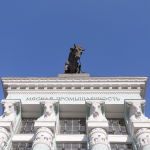 The Mystery of the Kentucky Meat Shower
The Mystery of the Kentucky Meat Shower
On March 3, 1876, one Mrs. Crouch was working in her yard in Bath County, Kentucky, making soap, when suddenly “meat which looked like beef began to fall all around her. The sky was perfectly clear at the time.” Falling like large snowflakes and settling all around the 5000 square foot yard, pieces of flesh ranging in size from about two inches square to four, dotted the ground and were even stuck on the fences. When it first appeared, the meat was said to be fresh, and, accordingly, two unidentified (but brave) men even sampled it. They claimed it tasted a bit gamey – like mutton or even venison. The story was published in the New York Times on March 9th, and it caught the attention of Leopold Brandeis who was able to get his hands on a sample that had been preserved in glycerine. After examining it… (more)
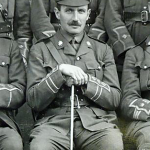 The Curious Case of Captain Robert Campbell
The Curious Case of Captain Robert Campbell
Captain Robert Campbell began his British Army career in 1903 at the age of 18. Shortly after WWI started, in July of 1914 Campbell and the soldiers he was leading, the First Battalion East Surrey Regiment, were sent to Mons-Condé canal in the north west of France. One week later, after an attack by German forces, Captain Campbell was seriously injured and ultimately captured. He was then treated in a German military hospital in Cologne, and, once healed up a bit, sent to the prisoner-of-war (POW) camp in Magdeburg, Germany. None of this makes Captain Campbell particularly unique in the “War to End All Wars.” Between… (more)
 How the Rumor That Paul McCartney Died in 1966 and Was Secretly Replaced by a Look-Alike Got Started
How the Rumor That Paul McCartney Died in 1966 and Was Secretly Replaced by a Look-Alike Got Started
For a couple of months in the fall of 1969, a persistent rumor that Paul McCartney had been killed two years earlier and replaced with a look-alike captured the imaginations of Beatles fans and the general public. The rumor began in the winter of 1967 when, after a particularly icy night, reports were flying among Britain’s national press that Paul had been killed in a car crash on January 7, 1967. The tale was reported in the February issue of The Beatles Monthly Book (#43) under the heading of “False Rumour,” and with a denial from the Beatles’ press office. In fact, it claimed that neither Paul nor his black Mini Cooper had even left the house that day. Fast-forward to September… (more)
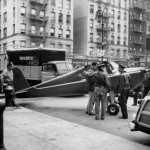 Hold My Beer- The Story of Tommy Fitz’ and His Drunken Bet
Hold My Beer- The Story of Tommy Fitz’ and His Drunken Bet
Thomas Fitzpatrick, known to his friends as Tommy Fitz, was a native of Washington Heights, Manhattan, who, although he had moved to New Jersey, still hung out with his old friends from the neighborhood. A “wild bunch,” Tommy’s crew were adventurous and enjoyed frequenting area bars. Late in evening (or rather early in the morning) of September 30, 1956, as he was leaving a tavern on St. Nicholas Avenue in Manhattan to return home, Tommy bet one of his buddies he could make it back to the bar from New Jersey in a mere 15 minutes. This, of course, is impossible by car. So after leaving the bar on that September night, Tommy traveled to the Teterboro School of Aeronautics in New Jersey… (more)
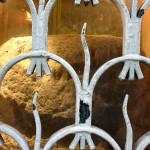 The Ancient Stone in London That Is Supposed to Be Important But No One Remembers Why
The Ancient Stone in London That Is Supposed to Be Important But No One Remembers Why
Sitting in the heart of London since long before anyone can remember, theories regarding the London Stone range from Roman ruin, to Druidic icon to a talisman of good fortune. Although many point to John Stow’s Survey of London (1598), where he sets the 10th century as the first mention of the stone in print (he claims he found a mention of the stone in a document from the 900s AD), others feel more comfortable citing a list of Canterbury Cathedral’s properties from somewhere around the turn of the 12th centuries, where it lists Eadwaker æt lundene stane. Regardless, by medieval times, the London Stone was a fixture in the city, so much so that residents even incorporated it into their names, such as Ailwin of London Stone. Clearly important, by the 15th… (more)
This Week’s YouTube Videos:
- The Story Behind MONOPOLY Pieces
- When a Tulip Cost More than a House
- Whales Don’t Spray Water Out of Their Blowholes and Other Interesting Whale Facts
- Where the Looney Tune’s “ACME” Corporation Name Came From
- The Fascinating Origin of the Word “Abracadabra”
- The Slave Who Helped Assemble the Famous “Freedom Statue” in Washington D.C.
- The Beach Boys Couldn’t Surf… and 6 other Sports Facts
- 12 “First Times Ever” You Need to Know!
Bonus Quick Facts:
- Dave Thomas of Wendy’s introduced the KFC trademark sign featuring a revolving red-striped bucket of chicken.
- The equal sign (“=”) was invented in 1557 by Welsh mathematician Robert Recorde, who was fed up with writing “is equal to” in his equations. He chose the two lines because “no two things can be more equal”.
- Pliny the Elder, the famed author, naturalist, philosopher, and commander, died trying to rescue people stranded on the shores after the eruption of Mt. Vesuvius, which destroyed Pompeii and Herculaneum. While attempting to sail his ship near the shore, burning cinders fell on the ship. Rather than turn around, as his helmsman suggested, Pliny reportedly stated “Fortune favors the brave! Steer to where Pomponianus is.” He landed safely and was able to rescue his friends and others on the shore. However, he never left that shore. Before they were able to set out again (they needed the winds to shift before they could safely leave), he died and ended up being left behind. It is thought he died of some sort of asthmatic attack or by some cardiovascular event, possibly brought on by the heavy fumes and heat from the volcano. His body was later retrieved three days later buried under pumice and it had no apparent external injuries. He was around 56 years old.
- Classically, scantron forms used blue ink for the lines and outlines to the circles because the original scantron systems couldn’t pick up the light in the blue spectrum. Modern systems are simply designed to ignore whatever color the scantron form was printed in.
- In Back to the Future III, ZZ Top played the Square Dance Band.
- Jimmy Stewart’s final film role was as the voice of Wylie Burp, in the 1991 movie An American Tail: Fievel Goes West.
Other Interesting Stuff:
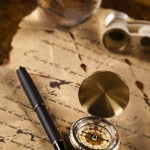 People in Columbus’ Time Did Not Think the World Was Flat
People in Columbus’ Time Did Not Think the World Was Flat
In 1492, Columbus sailed the ocean blue… with a whole lot of maps and information about the very round Earth. Contrary to popular belief, not only did Columbus realize the world was round, so did his contemporaries. In fact, it was so well accepted that daring seafarers had been exploring the Atlantic for hundreds of years before Columbus’ time. Without a doubt, men of the early Renaissance knew the world was round, and that the Nina, the Pinta and the Santa Maria were in no danger of sailing over the edge. The ancients were well aware the world was a sphere. Pythagoras (6th century B.C.) is generally credited with having first suggested a round Earth. Aristotle (4th century B.C.)… (more)
 Why Graduates Wear Caps and Gowns
Why Graduates Wear Caps and Gowns
Wearing academic robes is a tradition that dates back to at least the 12th century, around the time when the first universities were being founded in Europe. During this time, most scholars were also clerics or aspiring clerics, and excess in apparel was not encouraged. As such, in the beginning it is thought that there was little difference between what the academics were wearing and the laity, excepting that the academics and clergy tended to wear very plainly colored garb. Beyond that, the clothing was simply practical. When the universities were originally formed, they had no official buildings of their own to hold lectures in, so classes typically gathered in nearby churches. Their simple robes and outer covering served the purpose of keeping them warm… (more)
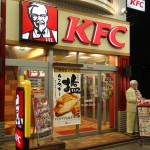 Was Colonel Sanders Actually a Colonel?
Was Colonel Sanders Actually a Colonel?
Kentucky Colonel is the highest honor that can be bestowed by the Commonwealth of Kentucky. (Incidentally, if you’re curious: Why Colonel is Pronounced “Kernel”) To be named a “Colonel” is to be recognized for “outstanding service to community, state, and nation.” The sitting governor of Kentucky, or the Secretary of State of Kentucky, are the only ones who can bestow such an honor onto an individual. These colonels are “Kentucky’s ambassadors of goodwill and fellowship around the world” and are “people from all walks of life.” Luminaries such as Muhammad Ali, Jim Beam, Fred Astaire, Betty White, and Winston Churchill are among the eclectic mix of people who have been named a Kentucky Colonel. But there was one person who took the honor of “Colonel,” something he was actually awarded twice, and made it an essential part of his identity- the colorful, eccentric founder of the “Kentucky Fried Chicken Empire,” Colonel Sanders, who incidentally didn’t manage to create that empire until after the age when many are contemplating retirement. He didn’t really have that luxury at the time, being just about flat-broke at the age of 62. If the only way to success is through failure… (more)
In May of 1976 in New York City, Roger Sharpe watched nervously as city council members piled into a Manhattan courtroom. Reporters and camera operators had already begun setting up, eagerly anticipating the proceedings ahead. Roger, a young magazine writer for GQ and the New York Times among others, did not expect this kind of attention. He knew lots of people, from bowling-alley-hanging teens to the Music & Amusement Association, were depending on him, but didn’t realize the whole country would be watching. Roger had been selected for this particular task not only for his knowledge and expertise, but for his legendary hand-eye coordination. He was there to prove that this was a game of skill, not chance. He was there to overturn the ban. He was there to save the game of pinball. On January 16th, 1920, the 18th amendment officially went into effect, making the production, transportation, and sale of alcohol illegal in the United States. With that act of moral legislating, gambling became the next target. Coin-operated machines, usually associated with slot machines and betting horses… (more)
 Pre-Sliced Bread Was Once Banned in the United States
Pre-Sliced Bread Was Once Banned in the United States
In 1943, Claude R. Wickard, the head of the War Foods Administration as well as the Secretary of Agriculture, got the bright idea to ban pre-sliced bread in America, which he did on January 18, 1943. The specific reasons behind this aren’t entirely clear, though it was about conservation of resources, particularly generally thought to have been about conserving wax paper, wheat, and steel. With regards to the wax paper conservation, by FDA regulations, pre-sliced bread used much thicker wax paper than loaves sold whole, due to the fact that sliced bread, not surprisingly, goes stale significantly faster than loaves left unsliced. While this was the official stated reason for the ban, there was no shortage of wax paper at the time the ban was put in place; according to the War Production Board, most bread… (more)
| Share the Knowledge! |
|





